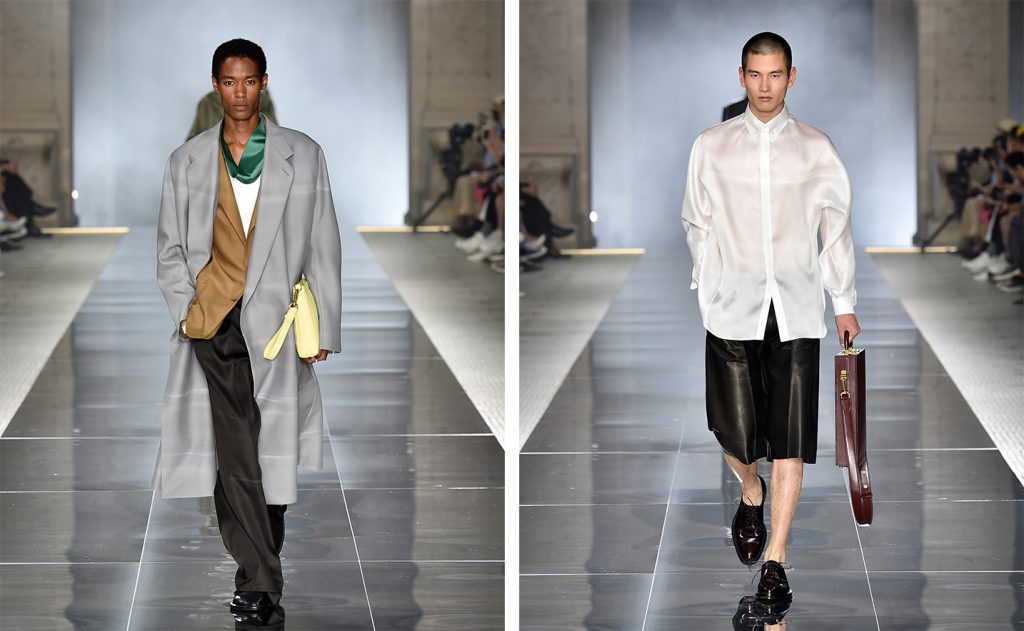DUNHILL SHOWS SPRING 2020 COLLECTION IN PARIS

The consumption and embracement of Japan and Japanese design in Britain in the 1980s serves as the inspiration for Dunhill’s spring/summer 2020 collection.
An element of modern Japanese classicism and volume is fused with relaxed, wrapped tailoring to take the place of the classic double-breasted jacket. A kimono approach to cutting is utilized; split and pooled hem trousers layered at times with shorts, add to the feeling of a new, rich take on suiting. Sloppy elegance finds form in a plethora of pressed and washed wool-silks and eveningwear fabrics, cravat-neck shirts and distorted prints. In turn, more utilitarian – yet still hyper-luxurious – form is found in double-faced leather ponchos, utilizing a 0.4mm grade; new ‘Rolla’ quilted leather outerwear and silk acetate parkas shine; while python and calf leather Derby shoes and hotel slippers are worn throughout.
Notions of satire are eschewed in the collection; rather, it is an easeful culmination of considered choices that is sought for the contemporary audience. Whether that is a ‘Tall Boy’ briefcase taken from the archive, a Kenta Cobayashi glitched print, or a white wool-silk sateen suit, the conventional and iconoclastic sit easily side by side. And it is this timeless, playful yet pragmatic sophistication of British men and menswear that is ultimately celebrated.
“Classicism distorted became a defining theme for me this season,” said Mark Weston, creative director of Dunhill. “I wanted elegance and austerity disrupted by sensuality and provocation, with a feeling of fluidity and ease running through it all. At the same time, rigor is all important; in tailoring particularly, nothing should just be for the sake of it. Proportion, fabrication, construction, and consideration have to be at such a high level for Dunhill. You really have to look at the collection; there is a lot of subtlety in there. I wanted to continue with and pay homage to Japanese design, particularly that of the 1980s, and how it intersected with casual clothing culture in Britain. This is not a pastiche, rather it is about how those cultures collide again, but on a global scale, today.”



